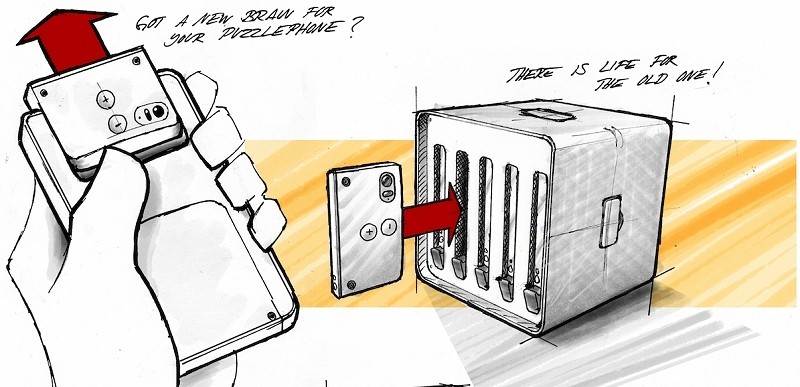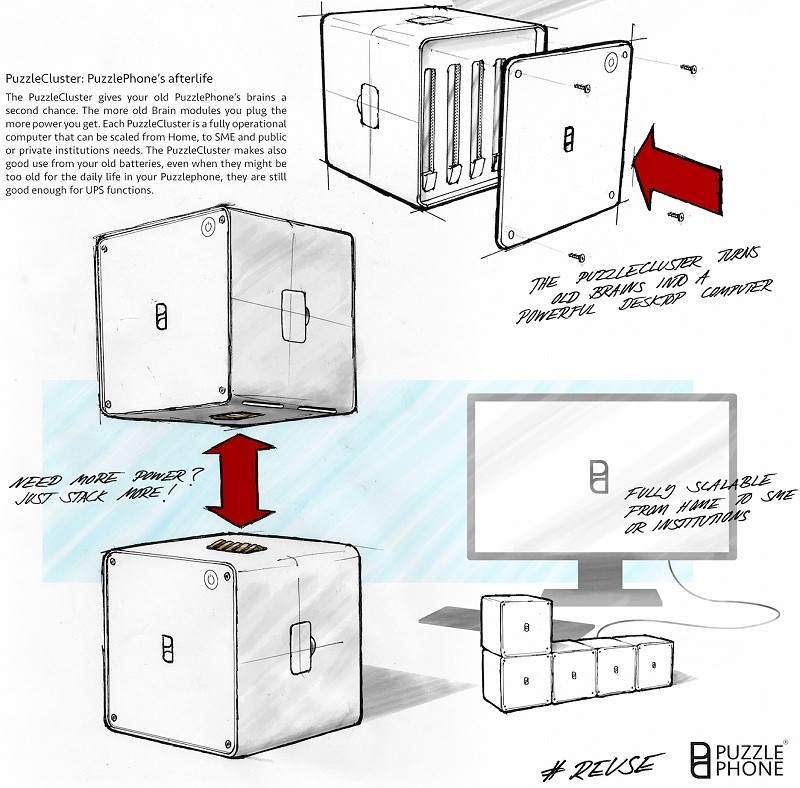
Modular smartphone concepts like Project Ara, Vsenn and PuzzlePhone could very well reshape the way we buy, sell and upgrade our handsets. The pitch is that, when a module becomes old and outdated (like the CPU, for example), one can simply swap it out for a newer, faster version.
But what becomes of the old modules that nobody wants anymore? Sure, they’re no longer the speed demons they once were but they still work perfectly so why throw them out?
Circular Devices, the company behind PuzzlePhone, has come up with a clever idea. When a PuzzlePhone user inevitably upgrades their CPU module, the discarded module can be reused to power a scalable computer cluster called a PuzzleCluster.

In other words, Circular Logic wants to combine the power from multiple older CPU modules to build a fully functional supercomputer. The end result likely won’t be as powerful as a "true" supercomputer but it could meet the needs of home users or even small to medium enterprise users.
Possible applications could include research and data analysis to rendering farms and in-house cloud services.
Early iterations of the PuzzleCluster are expected to include a power supply, internal connectivity for CPU modules, support for basic peripherals and external connectivity. There will even be slots for discarded battery modules that will be used as a built-in UPS.
It’s encouraging to see companies like Circular Logic planning ahead with regards to what to do with modules once consumers upgrade to newer models. The last thing we need is more e-waste filling up our landfills.
https://www.techspot.com/news/59518-puzzlephone-use-old-smartphone-modules-build-supercomputers.html